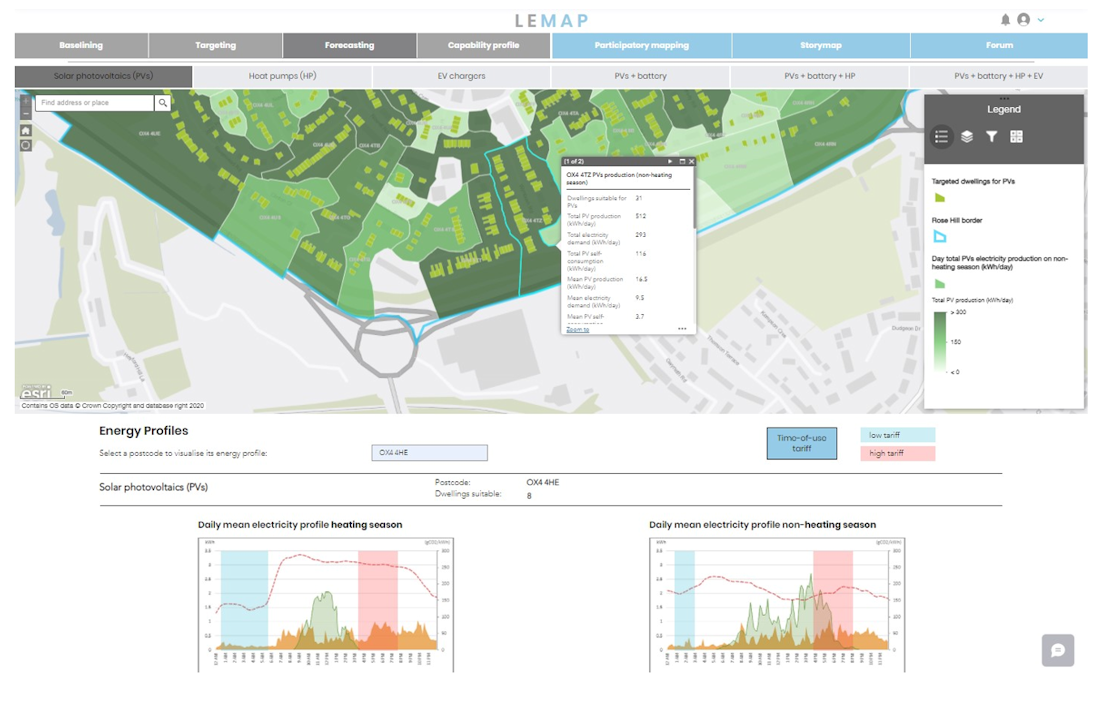Patrick Devine-Wright, Professor in Human Geography, College of Life and Environmental Sciences, University of Exeter and Professor Rajat Gupta, Professor of Sustainable Architecture and Climate Change, Director of OISD and LCB Group, School of Architecture, Oxford Brookes University
31 January 2022
A key dimension of the EnergyRev project is user engagement. This is because making energy systems more ‘local’ brings them closer to the people who will use or benefit from them. In this blog, we show two aspects of our research that highlight different ends of the spectrum of user engagement. First, at the societal level, we reveal public perceptions of smart local energy systems, drawing on large scale nationally representative survey data. Second, at the local level, we describe a smart engagement tool that is being trialled in neighbourhoods in Oxfordshire.
Using local area energy mapping to plan smart and fair neighbourhoods
The user influence tools project has been trialling an innovative and interactive local area energy mapping (LEMAP) tool for planning smart and fair neighbourhoods as part of Project LEO. LEMAP is an online tool that brings together public, private and crowd-sourced data on energy demand, energy resources, building attributes, socio-demographics, fuel poverty and electricity networks within the ESRI ArcGIS geographic software platform.
LEMAP has been organised around three technical and three engagement elements that include ‘baselining’ local area energy flows in relation to socio-economic characteristics; ‘targeting’ suitable properties for flex-ready low carbon technologies (LCT) such as rooftop solar; and ‘forecasting’ energy demand profiles at postcode level for different LCT scenarios. The engagement elements include: ‘Participatory mapping’ to allow residents to visualise their energy demand profiles, compare against the neighbourhood and see how the profile changes with LCTs; ‘Storymap’ for creating blogs on local energy flows; and ‘Forum’ to enable chats amongst users of LEMAP and project stakeholders.
LEMAP is being used by Oxford City Council, the Low Carbon Hub and Rose Hill and Iffley Low Carbon Community Group to develop roadmaps for achieving net zero emissions in Rose Hill, a socially-deprived neighbourhood in Oxford. A detailed note about LEMAP is available here.
Public perceptions of smart local energy systems
Survey data was collected from a large-scale, representative sample of adults across the UK in April 2021 (n=3034). The aim of the research was to examine public support for smart local energy systems and people’s willingness to engage with potential local projects. The research was conducted in collaboration with the Energy System Catapult’s Energy Revolution Integration Service.
Results indicate strong public support for a shift towards a more local energy system in the UK (Figure below). People support the deployment of renewable energy in their local area. There is evidence that public views about many of the specific offerings relevant to smart local energy systems, including smart heating controls, vehicle to grid technologies and peer to peer trading, are much less clear. Many people reply ‘neither agree nor disagree’ to these questions. As a result, there is more evidence of a willingness to learn about, than to participate in, local energy (e.g. financial investment).


